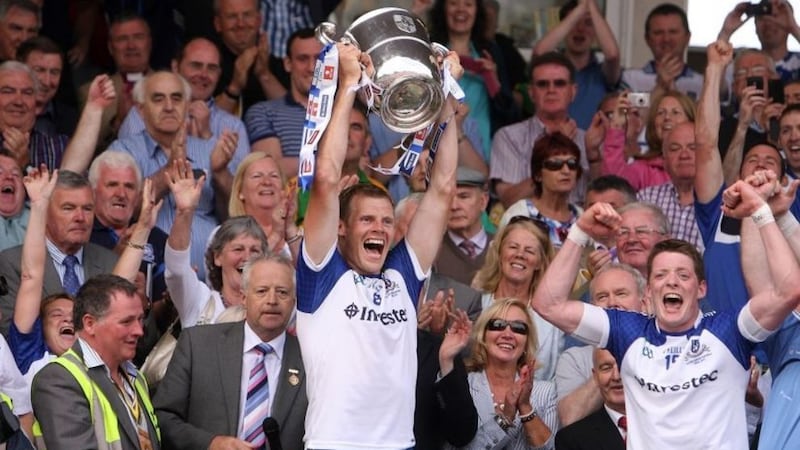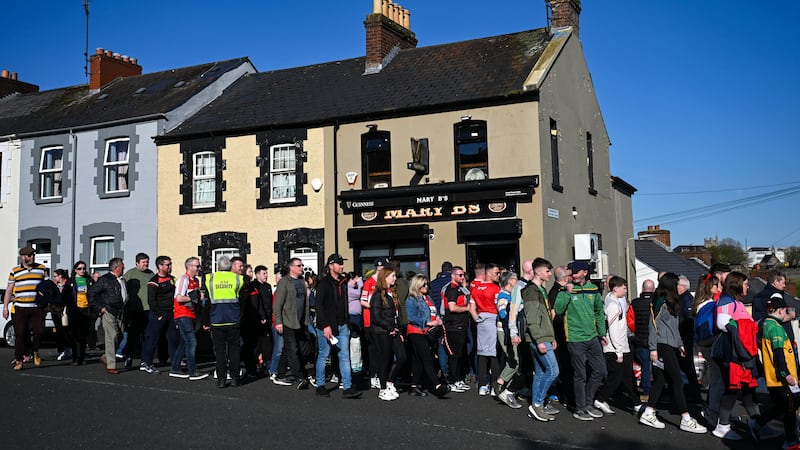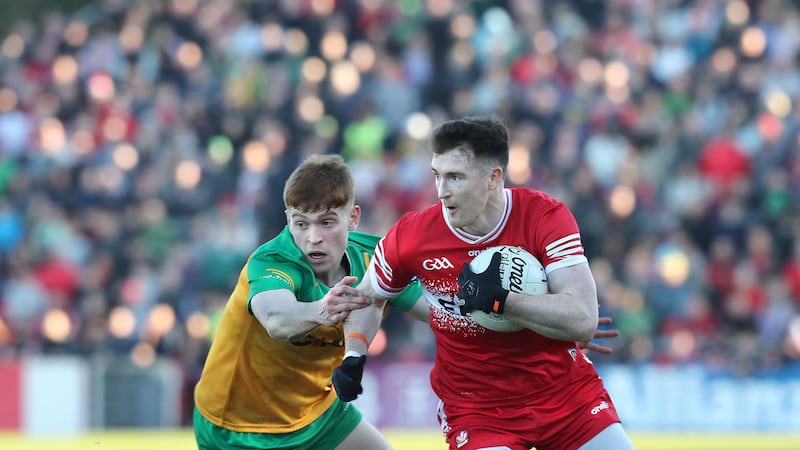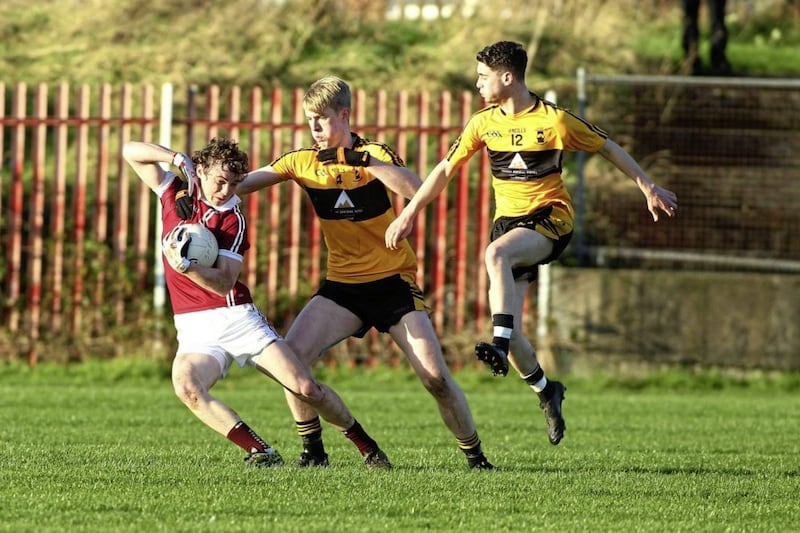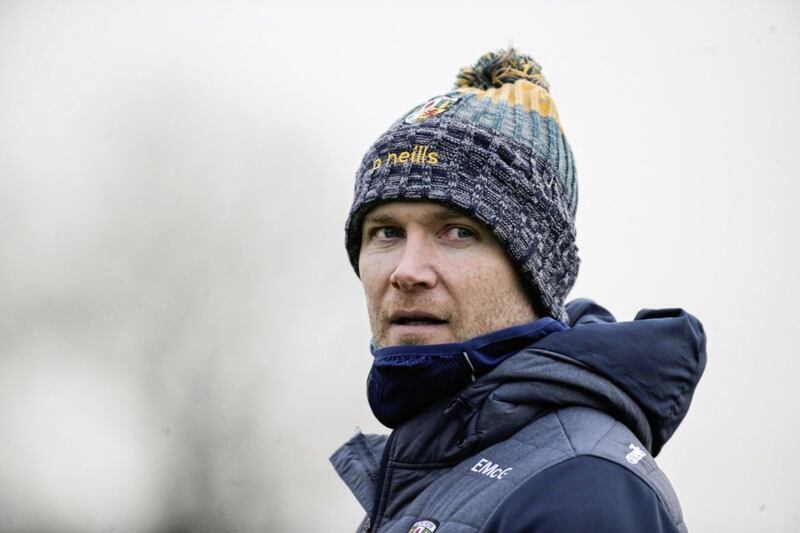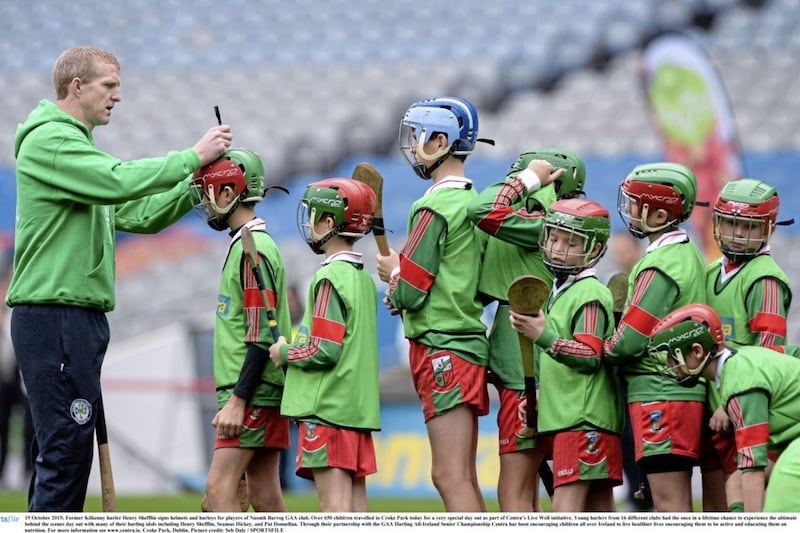STATISTICS will only ever tell you so much, and there are always caveats, but there is no hiding from certain numbers.
What this study shows is that there appears to be a definite correlation between the length of a championship run and the number of players turned over from year-to-year.
The average number of new faces for a Sam Maguire winning squad is 3.7, and that figure rises in keeping with which round a team is eliminated from the All-Ireland series.
Teams going out at the semi-final stage make 4.2 changes, right up to 5.9 for teams who have been beaten in the first round of qualifiers since 2008.
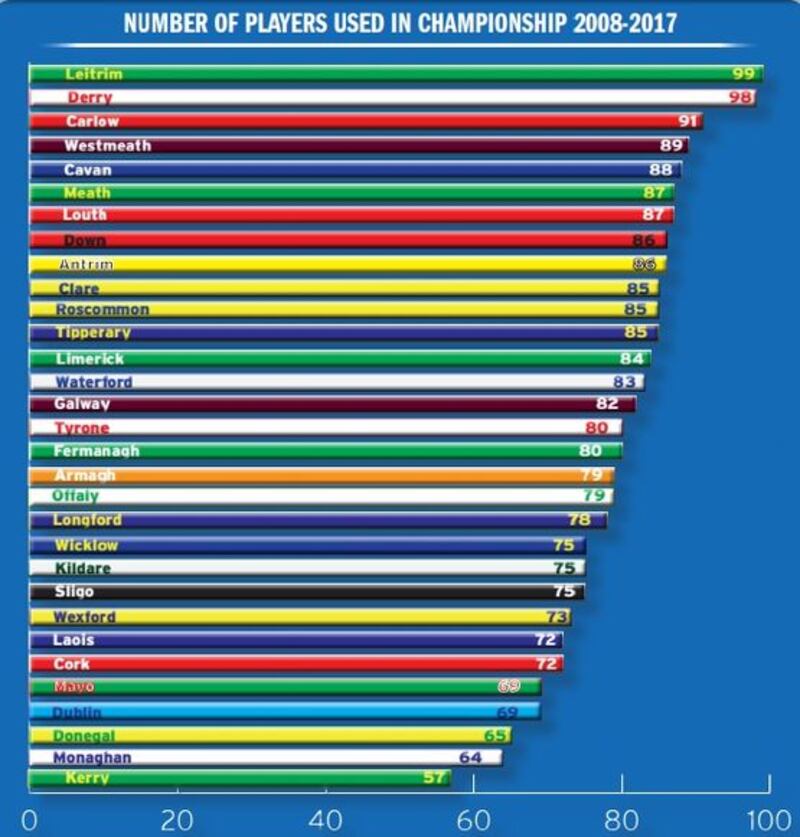
The bare figures of the number of players used will be particularly disturbing for Derry, if not a major surprise.
The timing is unfortunate in the sense that their team of the 2000's completely broke up in the couple of years after the 2008 Ulster semi-final loss to Fermanagh but they have continued to chop and change so much since that they have used more players than everyone except Leitrim.
The fact that they have reached just one Ulster final in that time – in 2011, where they lost to Donegal – underlines how difficult the transition has been as, from Damian Cassidy through to Damian Barton, they struggled to manage any consistency in their championship team.
Making an average of 10 changes to your championship team every single season for a full decade is clearly not the recipe for success.
Contrast that with Monaghan.
If Dick Clerkin is anything to go by then they’re fed up hearing they’re punching above their weight, but that is the reality.
Their population and playing resources ought to be no match for most counties and yet they’ve won two Ulster titles, been a regular visitor to the All-Ireland series and are sitting towards the top end of Division One yet again this year.
Of their current side, ten including Conor McManus, Dessie Mone, Darren Hughes, Vinny Corey, Kieran Hughes and Colin Walshe predate 2012, and they have managed to unearth diamonds that have strengthened them almost every year since.
In 2012 it was Karl O’Connell and Drew Wylie. The following year brought Rory Beggan, Fintan Kelly, Jack McCarron and Gavin Doogan. Then Ryan Wylie, Conor Boyle and Thomas Kerr the following year.
In 2015 it was Shane Carey and Ryan McAnespie, and the sole new face in 2016 was Conor McCarthy. Last year saw Michéal Bannigan and Dessie Ward given first championship outings, with both set to be about for a while to come.
Malachy O’Rourke has managed to keep all the resources he’s wanted at hand and add to them, helping them achieve an incredible level of consistency.
Donegal seldom made alterations under Jim McGuinness, who had a set of trusted lieutenants that he rarely strayed beyond.
In his four years in charge, he brought in just 10 new players and of them, Daniel McLaughlin, Ross Wherity and Luke Keaney played very little, while Darach O’Connor started on some big days but had injury troubles that restricted him.
The solidity of their core group was undoubtedly one of the major factors in their success, just as it has been for Dublin and Mayo, who each have used just 69 players in the same time.
Both have mildly experimented, though of the 20 new players Mayo have used since the beginning of 2012, only three – Diarmuid O’Connor, Brendan Harrison and Paddy Durcan – have gone on to become championship regulars.
That contrasts with Dublin, who have reshaped their team since the first of their five All-Ireland successes this decade in 2011.
James McCarthy came in that year, with Johnny Cooper, Ciaran Kilkenny and Jack McCaffrey making the breakthrough in 2012. Then it was Dean Rock and Paul Mannion in 2013, and John Small, Brian Fenton, Davy Byrne and Eric Lowndes in 2015.
Con O’Callaghan was the sole introduction in 2016 and of last year’s, Niall Scully, Shane Carthy and Brian Howard look most likely to find a regular spot at time goes on.
That represents change to over two-thirds of their team and yet they have continued to get stronger.
Their turnovers have been comfortably the biggest in terms of teams to have won an All-Ireland. Only Kerry, with five changes in 2009, match Dublin’s rate of change in 2013, 2015 and 2017.
***********************************
WHEN Terry Hyland took sole control of the reins in Cavan in 2012, he set about freshening up the squad for championship.
The way of things in the county at that stage was to run the under-21s – which whom he had great success – alongside the seniors and integrate some of the younger faces over the rough and tumble summer months.
That summer’s integration was a big one. As many as 13 new faces would appear in a campaign that lasted just three games, which stands as the third biggest turnover of players by any county in the last decade.
Despite a consistently high turnover in the winters that have passed since, they have managed to keep the graph on a steady ascent, though not without its blips.
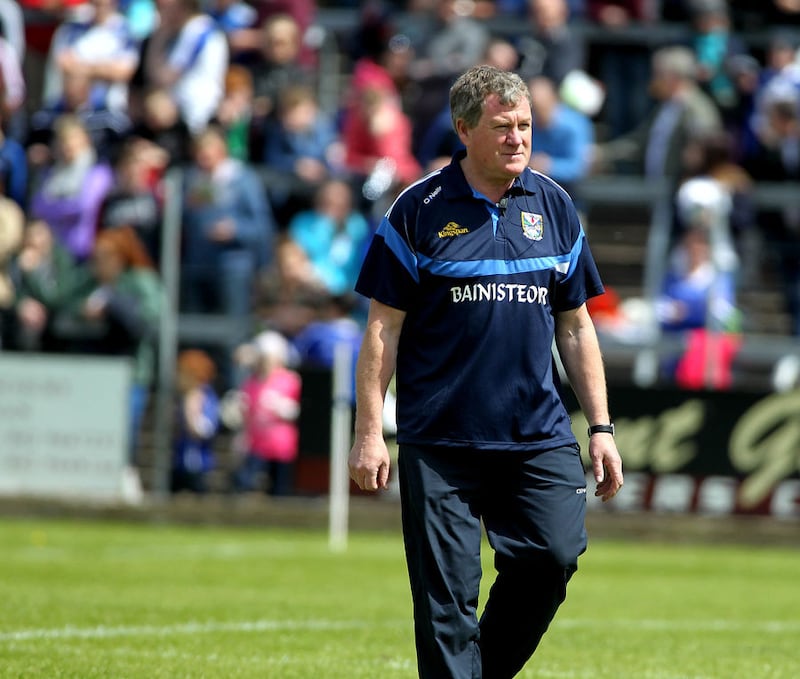
Right now they sit on the cusp of going back up to Division One, all in spite of another winter of change.
Over the last decade, they have used 88 players in championship football.
That puts them fifth on that list behind Leitrim, Derry, Carlow and Westmeath, but Cavan’s is arguably the most curious case of all given their progression in that same time.
As with all things, there is a natural order that often tells you more than the bare statistics themselves. Having not won an Ulster title since 1997, it was always going to be the case that four consecutive Ulster U21 winning teams would infiltrate the senior ranks fairly quickly.
But they’ve had to endure unforeseen losses too. David Givney and Rory Dunne will be 29 this year. Eugene Keating, 28. Alan O’Mara, 27. Michael Argue just 23.
Theirs are a variety of reasons and to see men drop out of inter-county football in their mid-20s now – some never to return – would be nothing unusual in most counties.
AN Irish News study suggests that only the truly successful stave it off. Kerry, Monaghan, Donegal, Dublin and Mayo have the smallest turnovers (in that order) and it would be hard to surmise that the figures aren’t directly related to their success, even if it is more relative for some than substantial.
In the five seasons between 2012 and 2016, Cavan were knocked out of Ulster four times by the eventual champions. They lost by six to eventual All-Ireland winners Donegal in the preliminary round in 2012, and then by a point to Monaghan in the years of their provincial successes, 2013 and 2015. In 2016 they took Tyrone to a replay.
Yet they haven’t had so much as the march behind the St Michael’s band on Ulster final day to show for the last six years of championship toil, a solitary All-Ireland quarter-final against Kerry their lot.
“We would have had a rising graph in Cavan, we went from the edges of Division Four to Division One, and we had good enough league campaigns, and that holds lads to a point.
“But unless you’re winning medals, it’s going to be hard to keep people around a squad if they don’t see that imminent success,” says Hyland, who now helps with the county’s under-16 development squad as well as doing bits of coaching in his own club, Belturbet.
“Football is a team sport but it’s a crowd of individuals that make it so, and every individual has his own problems, his own way of thinking and his own take on what he’s getting out of it.
“We just couldn’t get to that Ulster final, and that gnaws at players. I wouldn’t say the majority, but certainly a minority, and they get fed up then and start to think ‘we’re not going to do this now’.
“As the manager you have to be the optimist and look at the next step forward but not everybody thinks that way.”
*****
YET for all their success, Dublin have not been immune. Rory O’Carroll heading to New Zealand; Jack McCaffrey taking a year out to do charity work in Africa; Paul Mannion taking a year studying in China. Those examples stand out.
Even All-Ireland medals aren’t enough to keep some about, so you can forgive those that are on the outskirts of that battle for considering their priorities.
“It [not winning silverware] would be a consideration for a certain number of players. There’d be no point hiding behind the fence and saying it wasn’t, of course it is.
“At the end of the day, they’re young, ambitious men. They’re ambitious in what they do during the day and they’re going to be ambitious in their sport too.
“Everything has a measurement and for Cavan, that is the Ulster Championship. They see that as their measurement and they think they have to have something tangible to touch in the back pocket at the end of the year.
“When you talk about Leitrim or Derry, they haven’t had anything tangible to touch for a while. You always have to have something to put in the bank.”
*****
SPORT is not the matter of life or death that Bill Shankly once said it surpassed, and certainly not amateur sport.
There are those that have the lifestyle to be able to commit to inter-county football. There are those who deliberately tailor their lives to play. And there are those who go the other way, playing until other things come along and then choosing them instead.
“There’s so many things they can do,” says Hyland. “You can be anywhere you want in the world in a lock of hours.
“We did have so many young players and we were looking after their education, making sure they got colleges and went to college, and I used to say ‘lads, by the time you’re 30, most of you will be finished inter-county football and you have to make sure that you have a career after that’.
“There’s no point putting your hand up at 30 and saying ‘I’ve no football, what am I going to do now? I dedicated 10 years to it and now I’m married, I have a child or two, a mortgage, where do I go from here?’
“The economy is gone and all the work is on the east coast. If you’re hopping in a van and driving to Dublin every morning to work, you won’t play inter-county football.
“You’re putting in four hours a day on the road just to get to and from your work, and they just can’t stick at that. You’ll look at most inter-county panels and in the 26 counties, I’m not sure about the north, but a lot of the lads are teachers or third-level students.
“Some of them in different counties have said openly that they’ve chosen their profession specifically so they can play sport because it allows them time to do it, where other professions don’t.”
*****
THE topic of conversation right now is whether splitting the championship up into two or more parts would help salvage what can be a gaping wound in the GAA held together by the sticking plaster of a couple of good games every summer.
To list the arguments for is to start and list the arguments against, and it feels a bit like Brexit right now, with the two sides no closer to a satisfactory resolution than when the debate started.
Hyland points to mimicking the endorphins that are released by big championship afternoons as the biggest stumbling block for any potential second tier.
“If you’re from a weaker county, and you get to play Dublin or Mayo or Kerry, the actual occasion itself is a big thing.
“That day, going out in front of that bigger crowd on that bigger pitch, that can give you enough of an adrenaline rush to keep you going, that you can look towards that.
“Only one team ever wins an All-Ireland and the statistics will show it’s split up among very few counties. Players do get that adrenaline rush off those big days.
“In a big league game, you might get 8,000, which is a big crowd for most counties, but come Championship day you might double that. Cavan playing Monaghan, Tyrone, Donegal, you might get 20,000.
“That’s the adrenaline rush of the big occasion and it’s how you replicate that by splitting championships up is where I would feel the bigger problem is, and people would drop off.
“If two weaker counties are playing each other and 3,000 people turn up, players will turn around and say: ‘Well, what’s the point of being in this?’
“The only way I would see it working is if they play one in conjunction with the other, that weaker teams are in two championships. Let them play in both. We’ve gone Super 8s and perhaps if we had fewer games in the back door system, you could play two championships.
“Otherwise it becomes ‘I’m away on a holiday’ or ‘I can’t come’ or ‘I have to be somewhere else’. If it was the Ulster or All-Ireland series, they’d all be available.”
***********************************
*Stats do not include London or New York
NUMBER OF PLAYERS USED IN CHAMPIONSHIP 2008 - 2017
Leitrim 99
Derry 98
Carlow 91
Westmeath 89
Cavan 88
Meath 87
Louth 87
Down 86
Antrim 86
Clare 85
Roscommon 85
Tipperary 85
Limerick 84
Waterford 83
Galway 82
Tyrone 80
Fermanagh 80
Armagh 79
Offaly 79
Longford 78
Wicklow 75
Kildare 75
Sligo 75
Wexford 73
Laois 72
Cork 72
Mayo 69
Dublin 69
Donegal 65
Monaghan 64
Kerry 57
AVERAGE TURNOVER PER YEAR
2010: 6.5
2011: 6.7
2012: 5.6
2013: 5.5
2014: 5.8
2015: 5.5
2016: 5.5
2017: 5.2
AVERAGE NUMBER OF PLAYERS USED PER PROVINCE
Connacht 82
Ulster 80.6
Leinster 79.5
Munster 77.7
BIGGEST SINGLE ANNUAL TURNOVER
Roscommon 2010: 18
Louth 2015: 14
Cavan 2012: 13
Clare 2010: 12
Leitrim 2011: 12
Down 2016: 11
Fermanagh 2011: 11
Leitrim 2015: 11
Mayo 2011: 11
Monaghan 2011: 11
Offaly 2010: 11
Tipperary 2012: 11
Westmeath 2010: 11
SMALLEST SINGLE ANNUAL TURNOVER
Antrim 2016: 1
Cork 2012: 1
Donegal 2012: 1
Dublin 2016: 1
Kerry 2015: 1
Monaghan 2016: 1
Offaly 2017: 1
TURNOVER OF ALL-IRELAND WINNING TEAMS
Kerry 2009: 5
Cork 2010: 3
Dublin 2011: 3
Donegal 2012: 1
Dublin 2013: 6
Kerry 2014: 4
Dublin 2015: 5
Dublin 2016: 1
Dublin 2017: 5
Average: 3.7
AVERAGE TURNOVER FOR ALL-IRELAND FINALISTS
2010: 5
2011: 3
2012: 2
2013: 5
2014: 3.5
2015: 3
2016: 2.5
2017: 4
Overall average: 3.5
AVERAGE TURNOVER FOR ALL-IRELAND SEMI-FINALISTS
2010: 6
2011: 5.3
2012: 2.5
2013: 5.8
2014: 3
2015: 4.3
2016: 3.8
2017: 3.8
Overall average: 4.2
AVERAGE TURNOVER FOR ALL-IRELAND QUARTER-FINALISTS
2010: 5.5
2011: 5.5
2012: 3.4
2013: 5.5
2014: 4.3
2015: 3.8
2016: 4.8
2017: 4.6
Overall average: 4.7
AVERAGE TURNOVER FOR TEAMS ELIMINATED AT FIRST ROUND
2010: 6.3
2011: 8
2012: 6.4
2013: 4.8
2014: 6.4
2015: 5.1
2016: 5.7
2017: 4.3
Overall average:5.9
